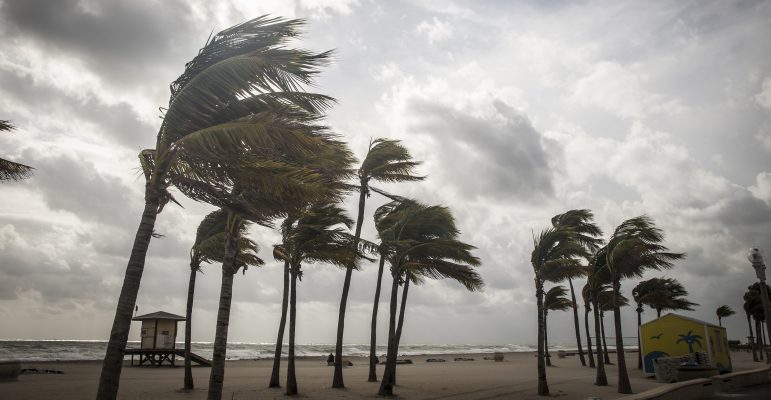![]()
So, it seems this social media thing is here to stay.
Hurricane Harvey is not the first opportunity for social media to play an integral part in emergency communication channels, but it is the most recent and, possibly, most widespread case. For anyone that has been under a rock, here’s the story.
This minor tropical depression in the Gulf of Mexico, all of a sudden, exploded into a Category 4 Hurricane that descended upon the Texas coast, decimating the beach community of Rockport, at around 10 p.m. on a Friday night. Most hurricanes then move inland and are, usually within hours, downgraded to tropical storms, then depressions.
Not Harvey.
Harvey is never a storm. As a hurricane, Harvey was nasty. As a sustained flooding event, Harvey is unprecedented. Not a hundred, 500 or even 1,000-year flood (depending on which expert you talk to). This kind of storm has never mechanized the conditions to line up so perfectly to drop devastation on Texas the likes of which have never been seen before. Almost 72 hours after landfall, Harvey was still a tropical storm, meandering around the central Texas coast, dumping feet of rain that had no where to go.
Those of us working in local government in north Texas have been monitoring the situation and sending resources as requested to assist in search and rescue efforts. Personally, while all this was happening, my wife and I were moving our son back to college over the weekend in Shreveport, Louisiana. Sunday morning we were in the hotel’s restaurant next to a tableful of U.S. Coast Guard pilots, from different parts of the country, who were hurriedly grabbing breakfast while evaluating the weather on the Texas coast and their best route in. It was humbling to see these faces of public service, these good folks who were hurrying to fly in to the tropical storm.
Government communicators take crisis communications very seriously. Most of us drill regularly whilst staying up with federal training models. However, putting that training to good use means staying agile enough to adapt to the myriad variables that any given emergency situation can throw at you.
A hurricane is good at variables.
In calmer times, many may regard the anonymous nature of social media as a blight on modern society. However, in an emergency, when normal lines of communication are down, social media can become a lifeline.
Facebook has become quite adept and offering users the chance to show their friends that they are “safe” if in a disaster area. Also, there are buttons if you “want to help” or if you “need help.”
There was a storm chaser that happened upon a lost dog who posted the video on YouTube. CNN picked it up and the dog was returned to his law enforcement owner.
One of the most dramatic stories came from the photo of the nursing home residents in about four feet of water. It was posted by the facility owner’s family in hopes of enlisting help. They got it.
Then, there are the local government professionals across the state that have spent most of the past five days hunkered down in EOCs, sleeping in their cars and consuming more coffee than is advisable for humans. These are the folks that make the rest of us proud to be public servants.
Victoria, Texas is about 30 miles inland from the Gulf of Mexico. After landfall, Harvey seemed to sit on top of Victoria for 12 hours or more, before beginning to meander back to the south. My colleagues in Victoria, O.C. Garza and Jennifer Sourdellia, advised that Facebook engagement has been key to local communication. During this time when they report their website was lightly used, their Facebook posts hit engagement levels of 126,697 with a reach of 679,473.
Victoria is a city of about 63,000 people.
O.C. said that the decision to choose one platform for official communications – Facebook, in this case – was key.
Corpus Christi is just west of Rockport and ground zero of the Friday night landfall. Communications Director Kim Womack said teamwork is all-important, always have a sign language interpreter for news conferences and know your chain of command. Having someone close at hand to sign off on information release and having a liaison for elected officials are critical. Kim stayed behind in the Corpus Christi EOC after sending her husband and kids to higher ground. Then, on top of everything else, the White House called yesterday.
South of the downtown Houston, Seabrook is near the Johnson Space Center. LeaAnn Dearman said Facebook and Twitter were important but the vast majority of residents were informed using the NextDoor social media network. LeaAnn also said she found it was necessary to be strategic about response to individual messages. Especially, if a small communications shop, like Seabrook, responding to all is not possible.
Perhaps it was Patti Jett, in Houston metro area’s Baytown, who summed it up best when she said “we plan for emergencies but in the case of Hurricane Harvey, when the disaster is this widespread, and everyone’s resources are stretched to the limit, even the best of plans are challenged.” She quoted a Facebook post that attempted to explain the expanse of the devastation to non-Houstonians:
“Houston is huge. The greater metropolitan area is circled by the Grand Parkway – which is 170 miles long. That makes the area of the circle inside the Grand Parkway over 2,200 square miles. Those 2,200 square miles of densely habited, urban and suburban, areas is flooded. Imagine if the entire state of Delaware, with twice the population of Manhattan was under water.
“That’s Houston.
“And, it’s still raining.”
Tom Bryson is part of the GovLoop Featured Blogger program, where we feature blog posts by government voices from all across the country (and world!). To see more Featured Blogger posts, click here.





Tom, thank you for this post. I’m sharing right away.